
5 minute read
Pollinator Paradise
Wilson Nurseries
3690 East-West Connector Frankfort 502.223.1488 wilsonnurseriesky.com
By Deborah Kohl Kremer Photos by Rebecca Redding
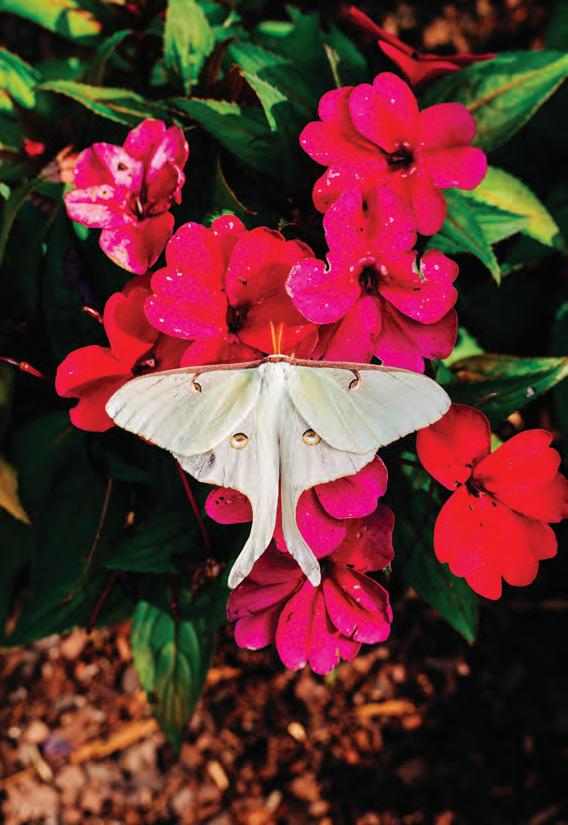

Wilson Nurseries’ butterfly greenhouse delights visitors while protecting these essential creatures
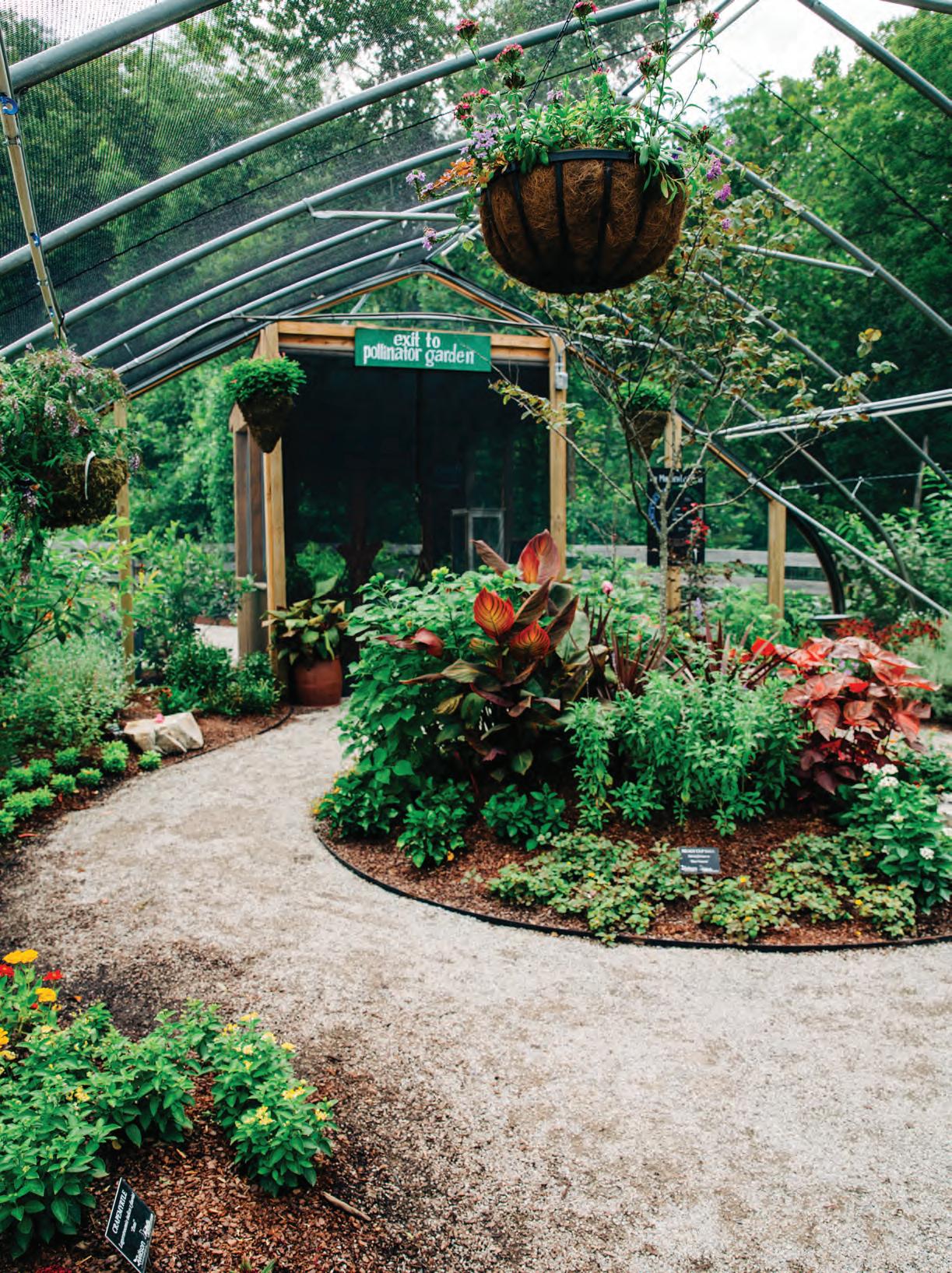
Check Wilson Nurseries’ Facebook page to find this year’s monarch tag-and-release date and updates on whether the event will be open to the public.

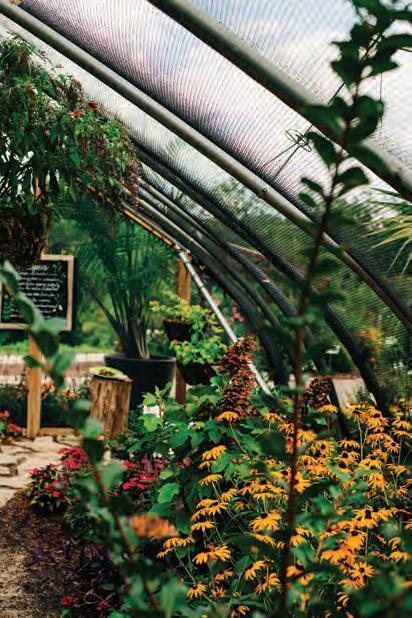

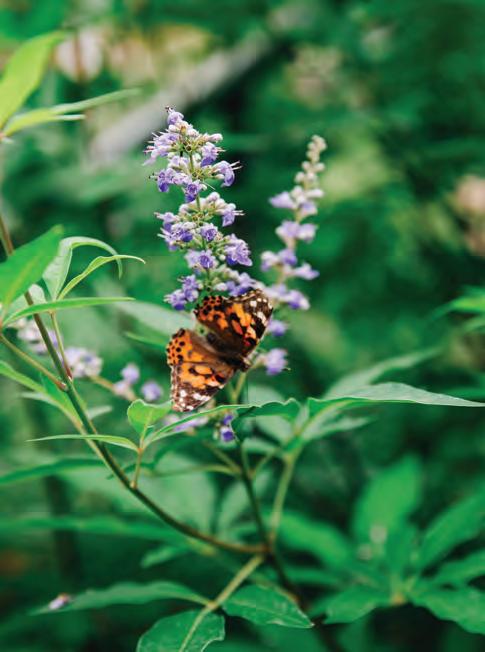
For a butterfly, what would be better than living in a screened-in greenhouse that protects from predators and is loaded with brilliant blooming plants? Wilson Nurseries in Frankfort might have created butterfly utopia for the colorful, fluttering insects, but for the rest of us, visiting the greenhouse is a pleasant respite from the sometimes overwhelming and tumultuous outside world.
The greenhouse, which opened in 2019, is something that nursery owner Jennifer Wilson had been thinking about for several years.
“I always knew I would have one, and then one day it came to life,” she said. “It is actually built on a swamp out back with lots of shade and water nearby. It is the perfect environment for them.”
Pollinators such as butterflies are essential for plant reproduction, thus maintaining our ecosystem and the growth of plants we need to survive. According to the United States Fish and Wildlife Service, improper use of insecticides and parasitic mites are to blame for the reduction in pollinator populations around the globe, with bees taking the hardest hit. Protecting all parts of the pollinating cycle has become vital.
“Butterflies are every bit as important as honeybees,” Wilson said.
According to pollinator.org, the pollinator—
SAGE ADVICE
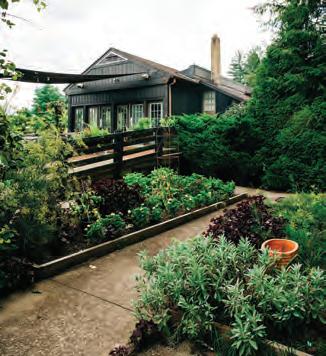
After your visit to the nursery, plan to stop by its on-site farm-to-table restaurant, Sage Garden Café. The eatery serves up scrumptious sandwiches such as the Bluegrass Benedictine, Mary Cat’s Monte Cristo and Cranberry Chicken Salad, which all feature fresh ingredients on house-made artisanal breads. Salads and bowls highlight house-made dressings and include the Garden Salad, Thai Salmon Salad and Bean-Goddess Bowl. The café offers Saturday and Sunday brunch, with an appetizing assortment of breakfast paninis on housemade sourdough bread, breakfast favorites such as French toast and the Outrageous Oatmeal Bowl, sandwiches and a quiche of the week. For dessert, you can’t go wrong with one of Sage Garden’s Colossal Cookies dipped in chocolate, giant lemon squares— called Lemon Love Bars—or Buffalo Trace Bread Pudding. Visitors can dine indoors or on the café’s welcoming patio.
SAGE GARDEN CAFÉ
Monday-Friday
10:30AM-5PM Saturday 9AM-5PM Sunday 10AM-5PM
with brunch served till 11AM Saturday and noon on Sunday. on
whether it be a butterfly, bat, bird, moth, wasp, bee or even a small mammal—drinks nectar or eats pollen, then transports the pollen to a different flower or plant. With about 95 percent of flowering plants needing help to pollinate, these critters are essential.


Wilson Nurseries has been around for more than 40 years, growing and selling just about any type of plant imaginable that grows in the Bluegrass region’s climate from its 25-acre nursery and greenhouses. Visitors come to find specific plants or just to meander down the aisles to get ideas or enjoy the ambience. The butterflies and their pollinating abilities are an added benefit to the grounds.
The butterfly greenhouse is populated from June through October, with hundreds of the stunning creatures being released into the greenhouse each week. Most of them come from Idlewild Butterfly Farm in Louisville.
“Almost all are already butterflies,” Wilson said, “but some are still in chrysalis … In the greenhouse, visitors can see the entire life cycle—eggs, caterpillars, chrysalis and butterflies.”
Wilson said that usually there are at least 10 species in the greenhouse, with 200 butterflies, but the number increases to as many as 1,500 in the peak season. These insects indigenous to Kentucky include painted ladies,

swallowtails and monarchs. The structure is full of dazzling hydrangea, salvia, hibiscus and—a butterfly favorite—milkweed, along with hundreds more blooming plants.
“The cool part for visitors is that it is an ever-changing thing,” Wilson said. “We have a limitless supply of plants, so we can constantly add plants that are blooming.”
She said the nursery hosted 8,000 visitors last year, but the outdoor, open-air greenhouse was never crowded.
“We planned this for all species of native butterflies,” she said. “We have pollinator plants all around the outside of the greenhouse, so we find so many butterflies on the outside as well.”
“At the end of the season, we just open the doors and let all the other species do what they do. They can stay or go … But it is the monarch that needs to get tagged and released in early October to start their migration.”
In October, Wilson’s hosts a monarch butterfly tag-and-release event. The butterflies are tagged with a small plastic sticker attached to the underside of the hind wing. This does not interfere with their flying and enables scientists to follow and learn about their migration patterns.

Monarchs, who typically live only six to nine months, fly south for the winter, usually to central Mexico. They are able to fly about 25 miles per day, but the entire trip extends about 3,000 miles. The monarchs then reproduce and die in the spring, and their offspring make the trip back north.
Last year, after staff and volunteers tagged and released the monarchs, they waited for them to fly away, but they didn’t. The butterflies stayed in the area for a few more weeks.
“It was kind of a bonus. We did not expect them to hang around,” Wilson said. “But I guess they liked it here.” Q
ONLINE EXTRA
Find more photos at kentuckymonthly.com!





